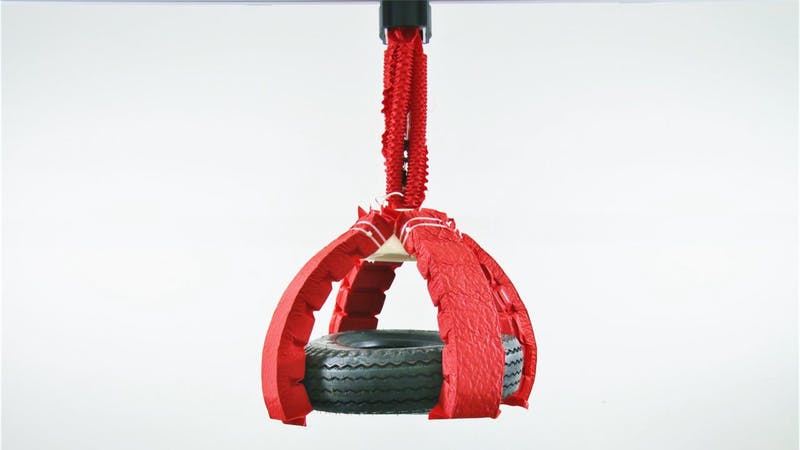
Image: Shuguang Li/Wyss Institute at Harvard University
Robots traditionally rely on bulky servos and other solid parts to create movement. However, recent developments may change how engineers design and build robots.
Researchers from the Wyss Institute at Harvard University and Massachusetts Institute of Technology’s Computer Science and Artificial Intelligence Laboratory (CSAIL) took inspiration from the Japanese art of folding paper (origami) to create artificial “muscles” which could allow for more fluid movements in machines.
According to a statement from the Wyss Institute, the design relies on a “skeleton” made of anything from metal coils to sheets of plastic, wrapped by a “skin.” This skin then gets filled with air or liquid. Movement happens when the skeleton compresses after the air or liquid gets sucked out to create a vacuum.
The muscle’s movement relies on how the skeleton has been designed. For example, a row of triangles would naturally curl up when air gets sucked out of the skin. The force created by the vacuum has been observed to be so effective that limbs made of this artificial muscle could lift up to 1000 times their weight.
Apart from application in traditional robots, soft robotics could also gain a great deal from this technology. Soft robots are traditionally weak because of the soft parts used to create them. The artificial muscle allows for both strength and flexibility to be incorporated into the design.
“When creating robots, one always has to ask, ‘Where is the intelligence – is it in the body, or in the brain?’” said Daniela Rus, Ph.D, senior author of the study.
She added, “Incorporating intelligence into the body (via specific folding patterns, in the case of our actuators) has the potential to simplify the algorithms needed to direct the robot to achieve its goal. All these actuators have the same simple on/off switch, which their bodies then translate into a broad range of motions.”
Due to the simple design of the artificial muscles, the researchers found they could make small and large variants without loss in effectivity.
Dr. Rus said, “The possibilities really are limitless. But the very next thing I would like to build with these muscles is an elephant robot with a trunk that can manipulate the world in ways that are as flexible and powerful as you see in real elephants.”
Combine this with the artificial skin that a different group of scientists are developing, plus an advanced artificial intelligence, and humans may soon give birth to androids, as imagined in science fiction works.
Watch some demonstrations below on how this technology could be applied. JB
RELATED STORIES:
WATCH: Atlas humanoid robot shows off acrobatic skills
Developer seeks to create sex robot that can bear babies
Stretchy artificial skin could give robots human-like sense of touch